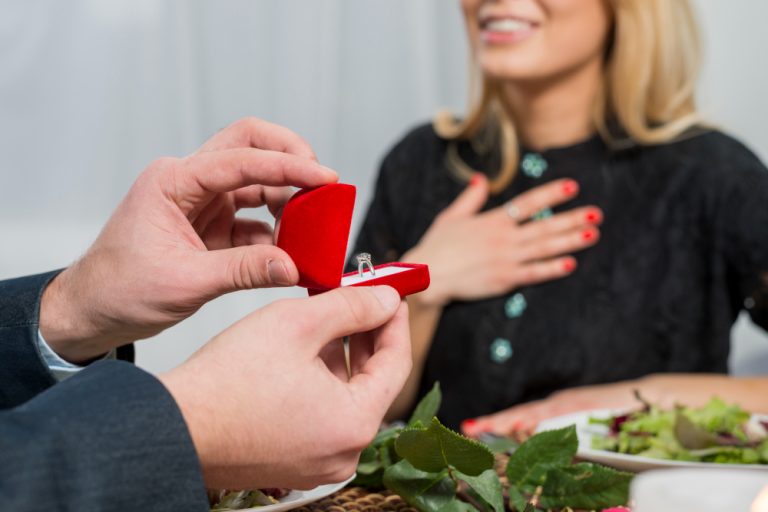Welcome to the dazzling world of gemstones, where innovation and sustainability converge! In an era driven by environmental consciousness, it’s time for the jewelry industry to embrace the transformative power of cutting-edge shaping techniques. Say goodbye to traditional mining practices that harm our planet and hello to a greener future for luxurious adornments. Join us as we delve into the realm of groundbreaking advancements revolutionizing how these precious gems are sourced and shaped, unleashing their true beauty while minimizing their ecological footprint. Get ready to be enchanted by the mesmerizing journey towards a more sustainable and ethically responsible jewelry industry!
Table of Contents
ToggleIntroduction
Jewelry is often seen as a symbol of luxury, but creating it can be quite harmful to the environment. The mining of diamonds and other precious gemstones has a large carbon footprint, not to mention the environmental damage caused by using harmful chemicals in the cutting and polishing process.
But there is hope for a greener jewelry industry, thanks to innovative gemstone shaping techniques that are less harmful to the environment. One such technique is called laser-assisted diamond cutting, which uses a high-powered laser to cut diamonds instead of chemicals. This results in less diamond waste, producing no toxic fumes.
Another promising technique is nano faceting, which uses tiny particles of diamond dust to polish gemstones. This method requires no water or chemicals and produces very little diamond waste.
With these and other innovative techniques, creating beautiful jewelry without harming the environment is possible.
What is Gemstone Shaping?
To create a beautiful piece of jewelry, gemstone shaping is essential. The most common type of gemstone shaping is cutting the stone into facets, which allows light to reflect off the different planes and create sparkle. Other types of gemstone shaping include tumbling, polishing, and cabochon cuts.
Some gemstones are naturally harder than others, making them more difficult to shape. However, with modern technology and diamond tools, even the hardest stones can be cut and polished to create a stunning piece of jewelry.
Shaping a gemstone can be time-consuming and expensive, but the results are worth it. A well-cut and polished gemstone will last a lifetime and can be passed down through generations.
There has been an increasing demand for ethical and sustainable jewelry in recent years. Consumers are becoming more aware of the negative environmental impact of mining precious metals and stones. As a result, many jewelers are turning to alternative methods of sourcing their materials.
One way that jewelers are making their products more sustainable is by using recycled or upcycled gems. Recycled gems are those previously used in another piece of jewelry and given a new life in a new piece. Upcycled gems come from other industries, such as forestry or construction and have been repurposed for use in jewelry.
Another way that jewelers are creating sustainable jewelry is by using lab-grown diamonds and other lab-created stones. Lab diamonds Melbourne have all the same properties as natural diamonds but are grown in a controlled environment, eliminating the need for mining.
How it Helps Promote a Greener Jewelry Industry
While traditional gemstone shaping and cutting techniques can be quite wasteful, innovative new methods are helping to promote a greener jewelry industry. One such method is known as laser ablation, which uses a focused laser beam to remove material from the surface of a gemstone. This technique is much more precise than traditional methods and can help to reduce waste and save on costs.
Another way that gemstone shaping can be made more environmentally friendly is by using recycled or reusable materials. For example, many diamond companies use recycled carbon from car exhausts to create their diamonds. This not only reduces the amount of pollution created by the diamond manufacturing process but also helps to offset the environmental impact of car emissions.
In addition to these more environmentally friendly methods of shaping gemstones, there is a growing trend towards using lab-grown or synthetic diamonds. These diamonds are created in controlled settings, using less energy and resources than mined diamonds. As awareness of the environmental impact of diamond mining grows, lab grown diamonds are likely to become increasingly popular choices for engagement rings and other fine jewelry.
Different Gemstone Cutting Techniques
There are a variety of different gemstone cutting techniques that can be used to create beautiful, unique jewelry pieces. The most popular methods include Cabochon, Facet, Rose Cut, and Tumbled.
Cabochon: A cabochon is a gemstone cut into a smooth, rounded shape with no facets or angles. This method is often used for opaque gemstones, as the lack of facets allows more light to pass through the stone, making it appear brighter and more vibrant.
Facet: Faceted gemstones are cut with flat surfaces called facets that help reflect light and create sparkle. The number of facets on a stone can vary, but the most common cuts are round (brilliant cut), oval (step cut), or square (emerald cut).
Rose Cut: The rose cut is a type of faceted gemstone that gets its name from its resemblance to a rosebud. It is cut with a flat base and numerous small facets around the edge of the stone, giving it a soft, romantic look.
Tumbled: Tumbled stones have been polished in a rotating drum with other rocks and water. This process gives them a smooth, rounded surface and helps to bring out their natural colors and patterns.
Benefits of Using Innovative Shaping Techniques
As the world becomes increasingly conscious of the need to protect our environment, industries are looking for ways to reduce their impact. The jewelry industry is no different, and innovative gemstone shaping techniques are helping to pave the way to a greener jewelry industry.
One of the most important benefits of using innovative shaping techniques is that it helps to reduce waste. Using methods such as laser cutting and computer-aided design (CAD), gemstone shapes can be created with much greater precision. This means there is less material waste and less energy and water consumption during the manufacturing process.
Innovative shaping techniques also help create unique and beautiful gemstone shapes that were impossible before. This not only makes for more interesting and eye-catching jewelry, but also helps to increase the value of the piece.
By using innovative shaping techniques, jewelers can create pieces that can withstand wear and tear better. This means that they will last longer, saving money in the long run, but also helps to reduce the environmental impact of manufacturing new jewelry.
Conclusion
Jewelry is both an artistic expression and a functional necessity. Through innovative gemstone shaping techniques, jewelry makers can now create beautiful pieces with much less environmental impact than before. This puts the power of choice in the hands of consumers, who can take action by choosing eco-friendly jewelry from sustainable sources for their next purchase. By embracing sustainable practices when crafting gems, we can help build a greener future for the jewelry industry and unleash its true beauty.




